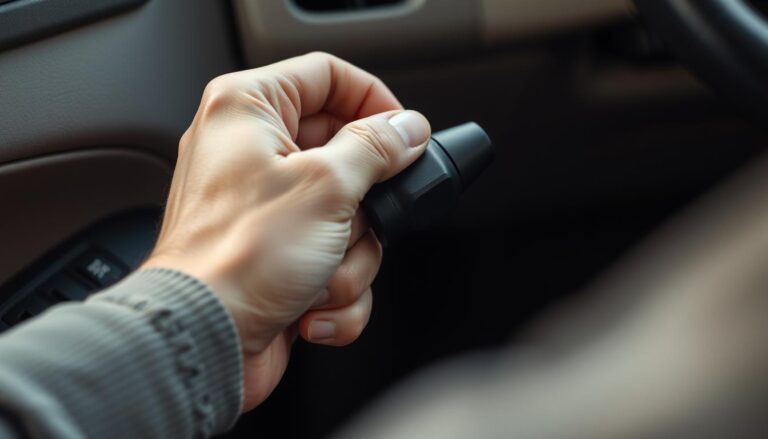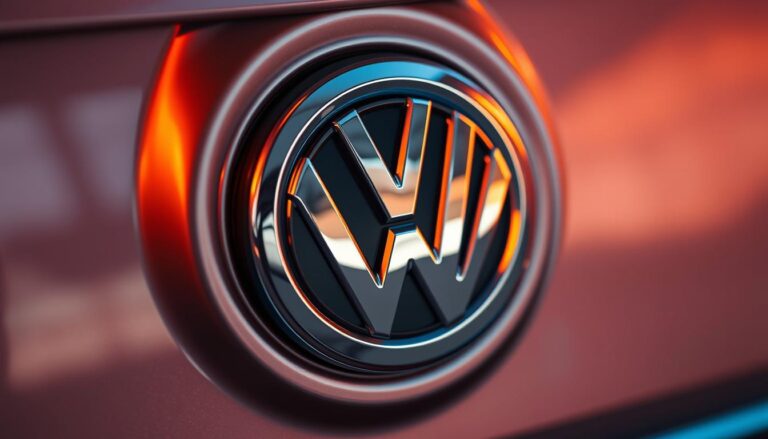A stuck gas pedal can be a frightening experience, posing significant safety risks on the road. When the accelerator gets stuck, it can lead to unintended acceleration, making it challenging to control the vehicle.
Understanding the common issues that cause a stuck gas pedal is crucial for resolving the problem efficiently. This article will explore the potential causes of accelerator problems and provide practical remedies to get your vehicle back to normal operation.
Prompt repair is essential to avoid accidents and ensure safe driving. By addressing the issue promptly, you can prevent further damage to your vehicle’s accelerator system.
Key Takeaways
- Understanding the causes of a stuck gas pedal is crucial for safe driving.
- Prompt repair can prevent accidents and further damage.
- Common issues include problems with the accelerator system.
- Practical remedies can help resolve the problem efficiently.
- A stuck gas pedal can lead to unintended acceleration.
Understanding the Dangers of a Stuck Gas Pedal
Understanding the risks of a stuck gas pedal is crucial for driver safety. A malfunctioning accelerator can lead to loss of control, increased stopping distances, and heightened risk of accidents.
Potential Safety Hazards
A stuck gas pedal can cause unintended acceleration, leading to potentially catastrophic outcomes. Drivers may struggle to maintain control, especially at high speeds.
Common Scenarios When Gas Pedals Stick
Gas pedals can stick due to various factors, including floor mat interference, mechanical failure, or electronic glitches. Awareness of these scenarios can help drivers take preventive measures.
| Scenario | Risk Level | Preventive Measures |
|---|---|---|
| Floor Mat Interference | High | Secure Mats Properly |
| Mechanical Failure | Medium | Regular Maintenance |
| Electronic Glitches | Low | Software Updates |
Statistics on Accelerator-Related Incidents
According to the National Highway Traffic Safety Administration (NHTSA), there were over 300 reported incidents of unintended acceleration in the United States between 2015 and 2020.
Gas Pedal Sticks: The Most Popular Causes and Solutions
A stuck gas pedal can be a frightening experience, and understanding its causes is crucial for resolving the issue. The problem can stem from various factors, which can be broadly categorized into mechanical issues, electronic throttle control problems, environmental factors, and vehicle-specific concerns.
Mechanical Issues
Mechanical issues are a common cause of a stuck gas pedal. This can include problems such as a worn-out or damaged throttle cable, issues with the pedal assembly, or interference from floor mats. For instance, if a floor mat is not properly secured, it can get caught under the gas pedal, causing it to stick. Understanding these mechanical issues is key to preventing and fixing the problem.
Electronic Throttle Control Problems
Modern vehicles often use electronic throttle control (ETC) systems, which can sometimes malfunction, leading to a stuck gas pedal. Issues with the ETC system can arise from faulty sensors, software glitches, or electrical issues. These problems can cause the throttle to stick or behave erratically.
Environmental Factors
Environmental factors, such as extreme temperatures or exposure to debris, can also contribute to a stuck gas pedal. For example, dirt or other contaminants can accumulate in the throttle body or pedal assembly, causing it to stick.
Vehicle-Specific Concerns
Some vehicles may have specific design or manufacturing issues that make them more prone to gas pedal sticking. It’s essential for vehicle owners to be aware of any recalls or common issues associated with their vehicle’s make and model.
Diagnosing a Stuck Gas Pedal Problem
Diagnosing a stuck gas pedal requires a systematic approach to identify the root cause. The process involves understanding the warning signs, performing simple diagnostic tests, and using specialized tools like OBD scanners.
Warning Signs to Watch For
Before diving into diagnostics, it’s essential to recognize the warning signs of a stuck gas pedal. These can include unusual noises, delayed acceleration, or the pedal feeling spongy or stiff. Noting these signs can help narrow down the potential causes.
Simple Diagnostic Tests You Can Perform
Several simple tests can be conducted to diagnose the issue. These include checking for any obstructions under the pedal, inspecting the floor mat for interference, and testing the pedal’s movement for any sticking or binding.
| Diagnostic Test | Purpose |
|---|---|
| Check for Obstructions | Ensure nothing is blocking the pedal’s movement |
| Inspect Floor Mat | Verify if the mat is interfering with the pedal |
| Test Pedal Movement | Check for sticking or binding |
Using OBD Scanners for Electronic Issues
For electronic throttle control issues, an OBD scanner can be invaluable. It can read trouble codes stored in the vehicle’s onboard computer, providing insight into the problem.
Differentiating Between Mechanical and Electronic Problems
Understanding whether the issue is mechanical or electronic is crucial. Mechanical issues often involve physical obstructions or wear, while electronic problems may stem from sensor faults or software glitches.
Step-by-Step Solutions for Mechanical Causes
Mechanical issues are a common reason for a stuck gas pedal, and addressing them requires a step-by-step approach. When a gas pedal sticks, it’s often due to a mechanical problem that can be fixed with the right techniques and tools.
Addressing Floor Mat Interference
One of the most common mechanical causes is floor mat interference. To resolve this, ensure the floor mat is properly secured and not interfering with the pedal’s movement. Adjust or replace the floor mat as necessary to prevent any obstruction.
Cleaning Sticky Throttle Linkages
Dirty or sticky throttle linkages can also cause the gas pedal to stick. To clean them, use a throttle linkage cleaner and follow these steps:
- Disconnect the linkage
- Spray the cleaner onto the linkage
- Wipe clean with a cloth
- Reconnect the linkage
Fixing Broken Return Springs
A broken return spring can prevent the gas pedal from returning to its idle position. To fix this, you’ll need to replace the return spring. Ensure you purchase a spring that matches the specifications of your vehicle’s original spring.
Dealing with Pedal Assembly Issues
Issues with the pedal assembly can also cause sticking. Inspect the assembly for worn-out parts and replace them as needed.
Tools Required for Repairs
| Tool | Purpose |
|---|---|
| Throttle Linkage Cleaner | Cleaning dirty throttle linkages |
| Wrench Set | Disconnecting and reconnecting linkages |
| Replacement Return Spring | Fixing broken return springs |
Safety Precautions During Repairs
When performing these repairs, ensure your safety by following these precautions:
- Disconnect the vehicle’s battery to prevent accidental starts
- Wear protective gear, including gloves and safety glasses
- Ensure the vehicle is securely supported on jack stands if lifted

Resolving Electronic Throttle Control Problems
The electronic throttle control system, when malfunctioning, can cause the gas pedal to stick, necessitating prompt diagnosis and repair. Electronic throttle control issues can manifest in various ways, including a stuck or unresponsive gas pedal, which can be dangerous if not addressed promptly.
Resetting the Electronic Control Unit
One of the first steps in resolving electronic throttle control problems is to reset the Electronic Control Unit (ECU). This process involves disconnecting the vehicle’s battery to reset the ECU’s settings. For detailed instructions on how to perform an ECU reset, you can refer to resources like this guide on throttle pedal position sensor, which may provide additional context.
Cleaning Throttle Body Sensors
Dirty or faulty throttle body sensors can also cause issues with the electronic throttle control. Cleaning these sensors can often resolve the problem. It’s essential to use the correct cleaning products and follow the manufacturer’s instructions to avoid damaging the sensors.
| Method | Description | Effectiveness |
|---|---|---|
| ECU Reset | Resetting the Electronic Control Unit | High |
| Cleaning Throttle Body Sensors | Removing dirt and debris from sensors | Medium to High |
| Replacing Faulty Components | Replacing damaged or malfunctioning parts | High |
| Software Updates | Updating the vehicle’s software to the latest version | Medium |
Replacing Faulty Components and Software Updates
In some cases, resolving electronic throttle control issues may require replacing faulty components or updating the vehicle’s software. If the problem persists after attempting the above solutions, it may be necessary to consult a professional mechanic who can diagnose the issue more accurately and perform the necessary repairs.
By following these steps, drivers can often resolve electronic throttle control problems and ensure their vehicle operates safely and efficiently.
Emergency Measures: What to Do When Your Gas Pedal Sticks While Driving
Understanding what to do when your gas pedal sticks is vital for safe driving and preventing accidents. A stuck gas pedal can lead to unintended acceleration, posing significant safety risks. Knowing the right emergency measures can help mitigate these dangers.
Shifting to Neutral Safely
If your gas pedal sticks, one of the first steps is to shift your vehicle into neutral. This action disengages the engine from the wheels, helping to regain control. It’s crucial to do this without taking your eyes off the road or losing control.
Proper Braking Techniques
Applying the brakes is the next step, but it must be done correctly. For vehicles with manual transmissions, use the clutch to disconnect the engine. For automatic vehicles, firmly press the brake pedal, but avoid slamming on the brakes to prevent skidding.

Safely Pulling Over and Shutting Down
Once you’ve regained control, signal and pull over to a safe location as soon as possible. Turn off the engine and engage the hazard lights to alert other drivers. For more information on handling sudden acceleration issues, visit https://www.telletire.com/sudden-acceleration/.
When and How to Use Emergency Braking Systems
Some vehicles are equipped with emergency braking systems. If your vehicle has this feature, understand how to activate it. This system can help slow down the vehicle quickly in emergency situations.
Communicating the Emergency to Other Drivers
After pulling over, use hazard lights to signal to other drivers that there’s an issue. This warning helps prevent potential rear-end collisions or other accidents. Staying visible and alerting others is key in such situations.
When to Seek Professional Help
A stuck gas pedal can be a serious issue; understanding when to consult a professional is key. While DIY repairs can be cost-effective and empowering, there are limits to what you can safely and effectively accomplish on your own.
Signs the Problem Is Beyond DIY Repair
If you’ve tried basic troubleshooting and repairs without success, it’s likely time to seek professional help. Signs that the issue is more complex include persistent sticking after cleaning, unusual noises from the throttle area, or dashboard warning lights that remain illuminated despite your efforts to reset them.
Choosing Between Dealership and Independent Mechanics
When deciding where to take your vehicle, consider the complexity of the issue and your vehicle’s make. Dealerships often have manufacturer-specific training and equipment, which can be advantageous for modern vehicles with complex electronic systems. Independent mechanics, however, may offer more competitive pricing and personalized service.
What to Expect During Professional Diagnosis
A professional mechanic will typically begin with a thorough inspection, potentially using specialized tools to diagnose electronic issues. They may perform tests to replicate the problem and identify the root cause.
Estimated Costs for Common Repairs
Costs can vary widely depending on the diagnosis. Here is a summary of potential costs:
| Repair | Estimated Cost |
|---|---|
| Throttle Body Cleaning | $100-$300 |
| Electronic Throttle Control Replacement | $200-$500 |
| Pedal Assembly Replacement | $300-$600 |
Conclusion
A stuck gas pedal can be a frightening experience, but understanding its causes and solutions can help you address the issue promptly and safely. The main causes of a stuck gas pedal include mechanical issues, electronic throttle control problems, and environmental factors.
To resolve the issue, it’s essential to diagnose the problem correctly, using techniques such as checking for floor mat interference, cleaning throttle linkages, and using OBD scanners for electronic issues. If you’re unable to resolve the issue yourself, seeking professional help is crucial to ensure your safety on the road.
In summary, a stuck gas pedal requires immediate attention. By following the steps outlined in this guide, you can identify and potentially fix the problem. As a final advice, regular vehicle maintenance and inspections can help prevent such issues from arising in the future.
FAQ
What are the common causes of a stuck gas pedal?
Common causes include mechanical issues, electronic throttle control problems, environmental factors, and vehicle-specific concerns such as floor mat interference, sticky throttle linkages, and broken return springs.
How can I diagnose a stuck gas pedal problem?
To diagnose the issue, look out for warning signs, perform simple diagnostic tests, use OBD scanners for electronic issues, and differentiate between mechanical and electronic problems.
What are the emergency measures to take when my gas pedal sticks while driving?
Shift to neutral safely, use proper braking techniques, pull over and shut down the vehicle, and consider using emergency braking systems if available.
Can I fix a stuck gas pedal on my own?
For mechanical causes, you can try addressing floor mat interference, cleaning throttle linkages, fixing return springs, and dealing with pedal assembly issues. However, if the problem is beyond DIY repair, seek professional help.
How do I reset the electronic control unit for electronic throttle control problems?
Check your vehicle’s manual for specific instructions on resetting the electronic control unit, as the process may vary depending on the vehicle’s make and model.
What are the signs that indicate the problem is beyond DIY repair?
Signs include complex electronic issues, persistent problems after attempting DIY fixes, and uncertainty about the diagnosis or repair process.
How do I choose between a dealership and independent mechanics for repair?
Consider factors such as the mechanic’s experience with your vehicle’s make, cost estimates, and reviews from previous customers to make an informed decision.
What are the estimated costs for common repairs related to a stuck gas pedal?
Estimated costs vary depending on the repair, such as replacing throttle body sensors or fixing return springs, and can range from a few hundred to several thousand dollars.


